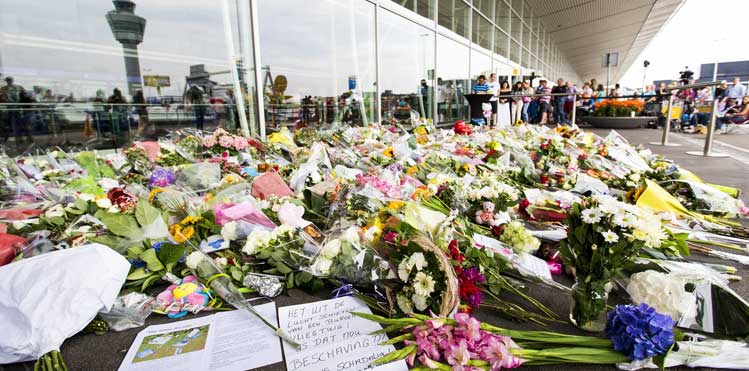As the 14th ACI Operations Conference meets in Paris’ CNIT at ACI Airport Exchange this November, the challenges facing operations teams at Europe and Asia’s airports are anything but one-dimensional. Regulatory, environmental and efficiency pressures are significant long-term considerations that will shape Europe’s aviation landscape over the next 5-10 years. But operations teams in Europe and Asia’s airports are also dealing with the immediate pressure that the unexpected brings to their doorstep, and all the while seeking to improve their on-going operations by adopting innovations that are will really make a difference.

Amsterdam Schiphol Airport was the departure airport of flight MH17, and at the 14th Operations Conference, taking place at ACI Airport Exchange in Paris in November, Birgit Otto, the airport’s Chief Operating Officer, will share her experience of remaining operationally resilient amid such tragedy.
Managing tragedies, the unexpected and disruption
2014 will be remembered as a painful year in aviation, with flight numbers MH370 and MH17 vivid in the public’s memory and other serious incidents also weighing heavily on the industry. In the aftermath of such regrettable events, and especially when they occur in such uncertain circumstances, the international limelight quickly fell on the key institutional stakeholders involved; government bodies, the airlines and the airports affected in each incident.
While investigations into specific causes of these events will go on for years to come, it is timely to consider what can be learnt from the institution’s operational responses in the aftermath of such unexpected events.
Amsterdam Schiphol Airport was the departure airport of flight MH17, and at the 14th Operations Conference, taking place at ACI Airport Exchange in Paris in November, Birgit Otto, the airport’s Chief Operating Officer, will share her experience of remaining operationally resilient amid such tragedy.
Following the hijack by the pilot of an Ethiopian Airlines flight, Geneva Airport was also the focus of intense media attention as the eventual landing place of the plane, after being guided by fighter jets through Italian airspace.
Less sensational from a media point of view, but nonetheless a formidable challenge in airport operation, is the careful prevention of disruption over the long-term, of which Helsinki-Vantaa Airport is a prime example. The last time it was forced to close due to a snow event was in 2003, proving that quality service in extreme weather can be accomplished.
Emerging technologies gaining acceptance
In addition to preparing for and responding to immediately concerning events, the planning meetings of operations teams across Europe and Asia’s airports are also occupied by the emerging technologies. As progressive industry colleagues trial and begin benefitting from some technologies in full operations, it can be challenging to filter the marketing-spun hype from genuine confidence.
The success of Copenhagen Airport’s foray into predictive analytics are a great example of how more recent technological developments have been applied operationally to great effect. Instead of relying on seasonal forecasts, the airport works from daily forecasts and a sensor-based system to reduce this interval further, enabling accurate allocation of resources in the airport. Applied as an alternative to physical facility expansion, the benefits to airports of such technology investments are clear.
A somewhat more ‘blue-sky’ project to apply Google Glass wearable technology to operations has been underway at London City Airport, and will also be shared at ACI Airport Exchange. While consumer take-up and the search for practical applications for Google Glass and other wearables in the travel sector is in its early stages, such enterprise-based uses for equipping employees has gained more traction.
Other emerging technologies being implemented, with the results to be discussed in Paris, include innovations in ground handling and passenger processing.
Green and efficient – SESAR and A-CDM deployment gathers pace
A long-term influence likely to impact the future of airport operations is the on-going SESAR deployment. Europe’s airports have much to gain from the development work being undertaken to modernise the ATM system, with capacity, efficiency and environmental benefits evident. Perhaps even more so than shorter-term innovations, such large scale projects demand real collaboration across many levels of regulatory, institutional, commercial and supplier bodies. Key stakeholders from across this spectrum will present in Paris.
In the parallel field of A-CDM, Rome Fiumicino airport has engaged in these collaborative efforts, and has now fully implemented the standard. All partners involved in the process of aircraft arrival and turnaround have stories of the efficiencies to be gained, more than six months into the programme.
EUROCONTROL will also take part in this industry-wide collaboration, with Director General Frank Brenner outlining what it will do to support and regulate towards the common goal of efficiency and capacity growth. In addition, EUROCONTROL will also launch its guidelines on how airport infrastructure can be best adapted with a changing climate in mind.

The 14th Operations Conference takes place at ACI Airport Exchange, at the CNIT in Paris, 3-5 November 2014. The conference will assess how technology initiatives and management strategies can effectively deal with crisis and disruption, and enhance safety. Representatives from the field will discuss methods of adapting airport infrastructure to cope with a changing climate as well as looking ahead to embracing the possibilities that next generation technology offers to optimise operations and staff performance.
» Register your place at ACI Airport Exchange
» View the Operations Conference agenda







